Company:
Dickins & Jones Ltd
Images
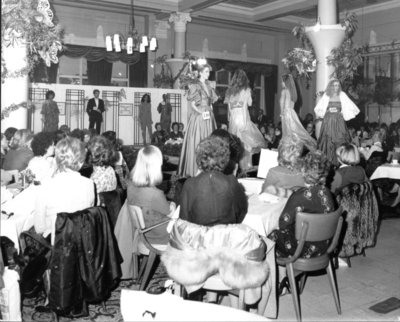
Models on the catwalk in evening gowns at the Helena Geffers fashion show held at Dickins and Jones in September 1951.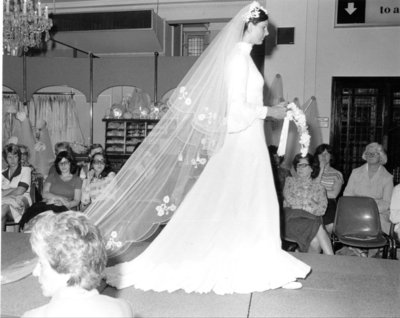
Models wearing bridal gown on the catwalk at a fashion show for Dickins and Jones, c.1960s.
Models wearing rain macs and knee high boots at a fashion show for Dickins and Jones, c.1960s.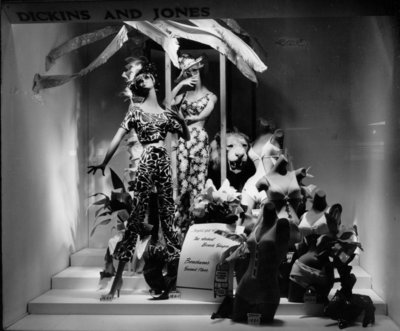
Window display of beach-wear at Dickins and Jones, c.1960s.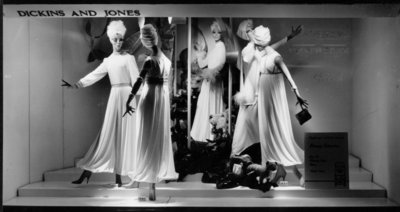
Window display of ladies dresses at Dickins and Jones, c.1960s.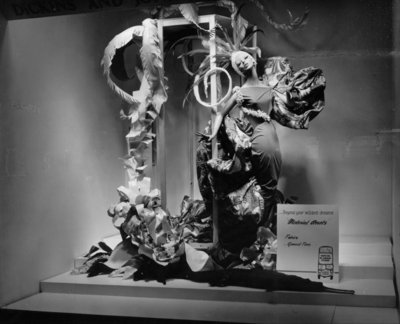
Window display of ladies evening dress complete with head dress at Dickins and Jones, c.1960s.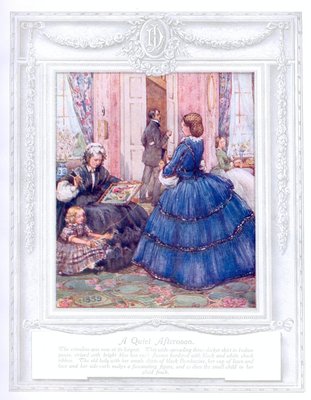
'A quiet afternoon' (1859). 'Upwards of a Century'. Dickins and Jones catalogue illustrating 100 years of fashion, 1909.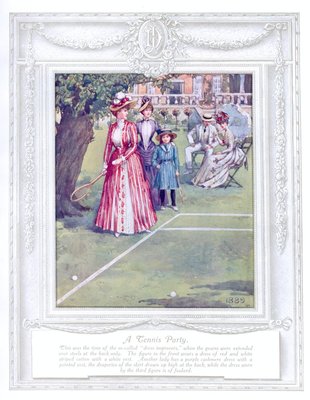
'A tennis party' (1889). 'Upwards of a Century'. Dickins and Jones catalogue illustrating 100 years of fashion, 1909.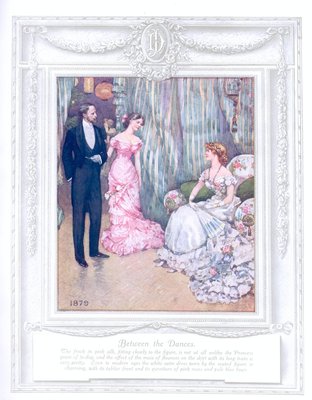
'Between the dances' (1879). 'Upwards of a Century'. Dickins and Jones catalogue illustrating 100 years of fashion, 1909.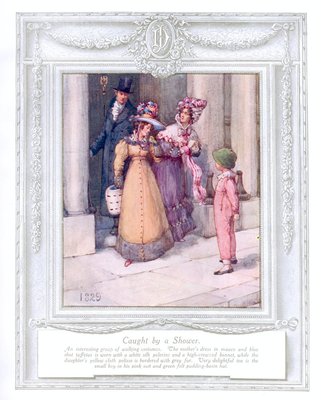
'Caught by a shower' (1829). 'Upwards of a Century'. Dickins and Jones catalogue illustrating 100 years of fashion, 1909.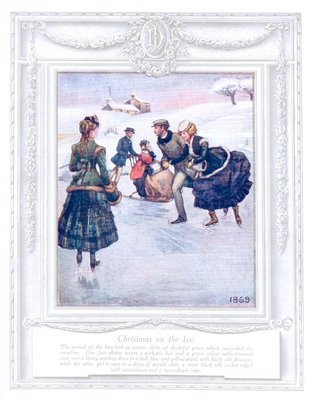
'Christmas on the ice' (1869). 'Upwards of a Century'. Dickins and Jones catalogue illustrating 100 years of fashion, 1909.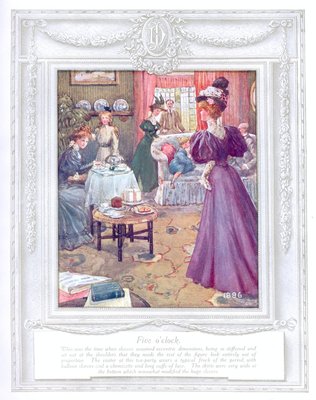
'Five o'clock' (1896). 'Upwards of a Century'. Dickins and Jones catalogue illustrating 100 years of fashion, 1909.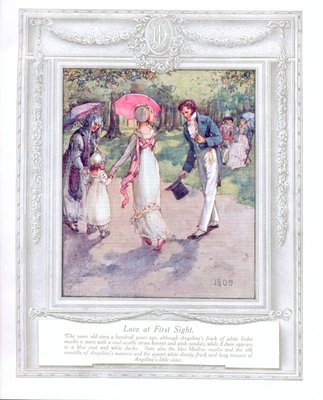
'Love at first sight' (1809). 'Upwards of a Century'. Dickins and Jones catalogue illustrating 100 years of fashion, 1909.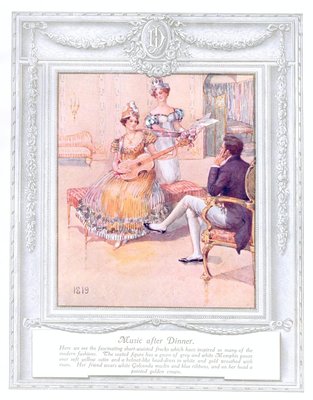
'Music after dinner' (1819). 'Upwards of a Century'. Dickins and Jones catalogue illustrating 100 years of fashion, 1909.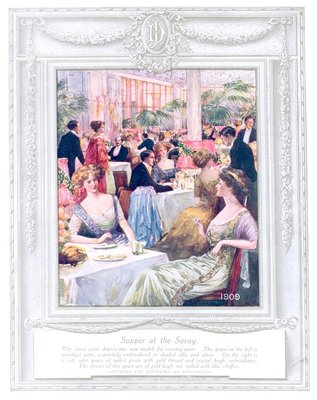
'Supper at the Savoy' (1909). 'Upwards of a Century'. Dickins and Jones catalogue illustrating 100 years of fashion, 1909.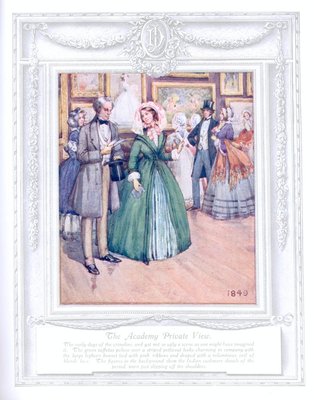
'The academy private view' (1849). 'Upwards of a Century'. Dickins and Jones catalogue illustrating 100 years of fashion, 1909.
'The manoevres of the aeroplane' (1909). 'Upwards of a Century'. Dickins and Jones catalogue illustrating 100 years of fashion, 1909.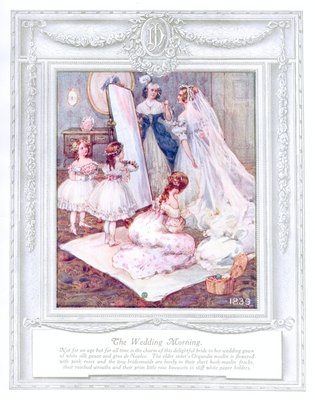
'The wedding morning' (1839). 'Upwards of a Century'. Dickins and Jones catalogue illustrating 100 years of fashion, 1909.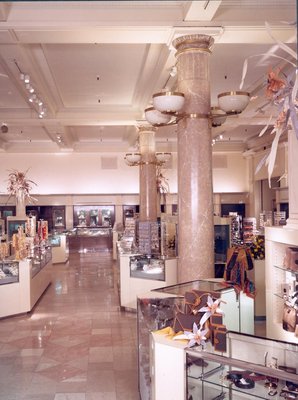
Accessories counters at Dickins and Jones, c.1970s.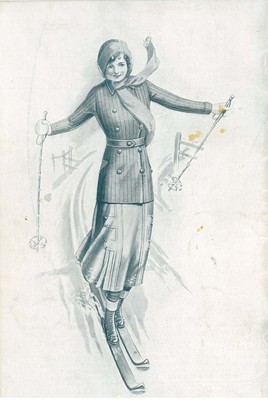
Back cover of Dickins & Jones Ltd Winter Sports catalogue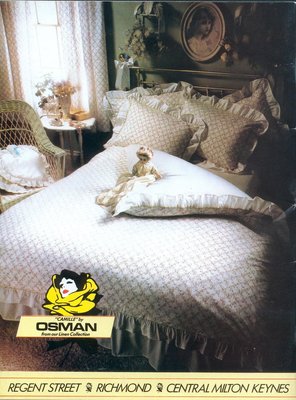
Back cover of the Dickins and Jones autumn show catalogue, c.1980s.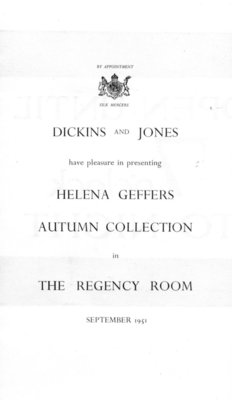
Cover of programme for Helena Geffers fashion show held at Dickins and Jones in September 1951.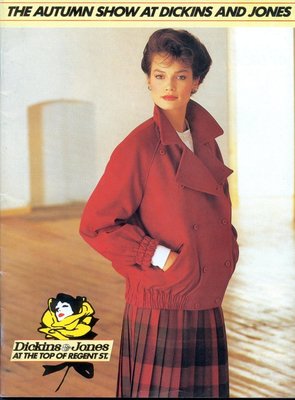
Dickins and Jones Autumn Show catalogue, front cover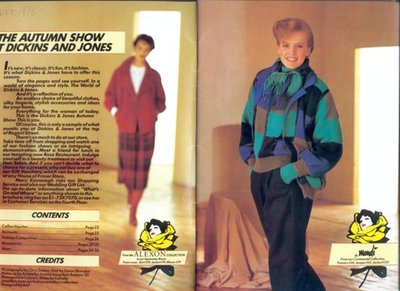
Dickins and Jones Autumn Show catalogue, pages 2-3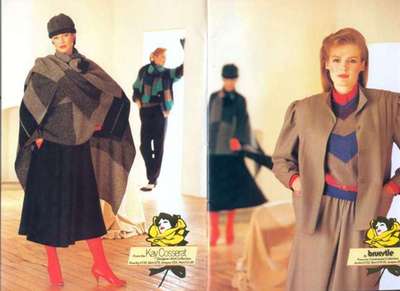
Dickins and Jones Autumn Show catalogue, pages 4-5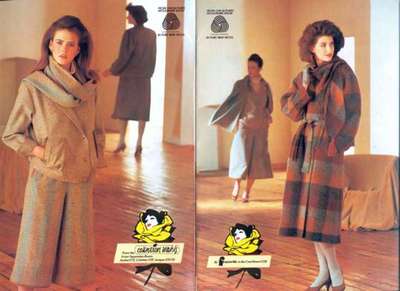
Dickins and Jones Autumn Show catalogue, pages 6-7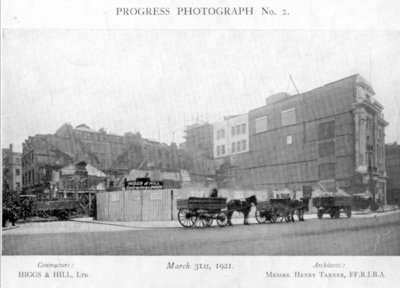
Dickins and Jones in the progress of being built in London, 1921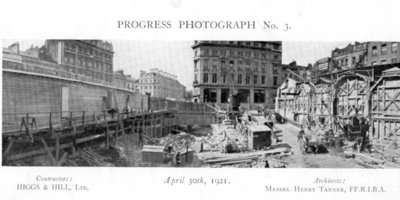
Dickins and Jones in the progress of being built in London, 1921
Dickins and Jones shop front in London, 1902.
Front cover of Dickins & Jones Ltd Winter Sports catalogue, 1913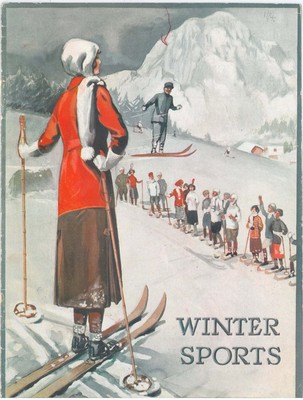
Front cover of Dickins & Jones Ltd Winter Sports catalogue. If you were shopping for a skiing gift in London in the 1920s, Dickens & Jones would have been your first stop.
Front cover of the Dickins and Jones winter sports season catalogue, 1926-27.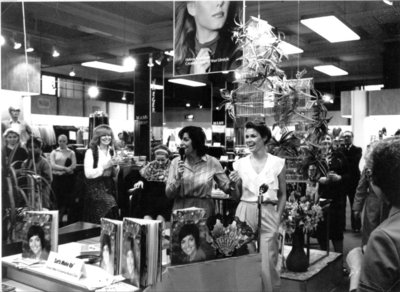
Helena Rubenstein make up promotion evening for Dickins and Jones, c.1970s.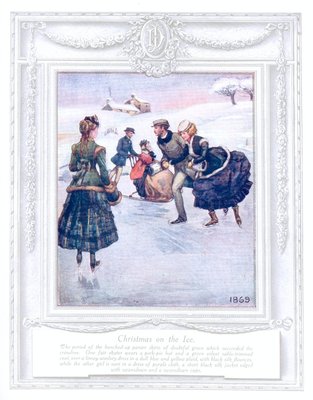
Page 15 of Dickins & Jones “Upwards of a Century†catalogue, printed in 1909, depicting Christmas on the Ice in 1869.
Page 2 of Dickins & Jones Ltd Winter Sports catalogue.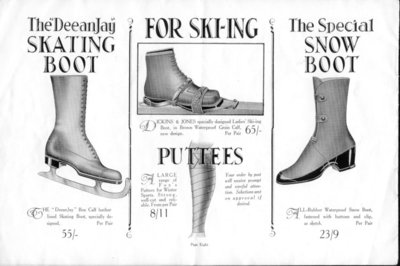
Winter boots, skates and skis advert in the Dickins and Jones winter sports season catalogue, 1926-27, page 8
Registration number: 66575
Company name: Dickins & Jones Ltd
Dates in business: 1900-2005
Type of business: department store retailers
Type of company: Limited liability company 1900
Locations:- Regent Street, London, England
- Argyll Street, London, England
- Richmond, England
- Milton Keynes, England
Company history
In 1900 Dickins & Jones Ltd incorporated as a limited liability company, with a share capital of GBP600,000. The firm had a long established history, tracing back to the linen drapery of Thomas Dickins and William Smith which had premises at 54 Oxford Street, London in 1803. In 1835, the company moved into their impressive premises in Regent Street, which were to remain their flagship store until its closure in 2006. The imposing facade, built by Samuel Baxter, featured four large columns and the golden lion brought from the Oxford Street premises. By this time, the company had built up extensive connections based on the sale of quality goods at reasonable prices. In 1856, the death of Thomas Dickins, senior, allowed the creation of Dickins & Jones with Charles John Dickins, Henry Francis Dickins and John Prichard Jones as partners.
By 1900, the company was enjoying considerable success. The Regent Street store had grown, incorporating premises in Argyll Street which served as a warehouse. The 1890s had seen the growth of the store's traditional linen lines to include the sale of lace, dresses, furs, mantles, wedding trousseaux, mourning apparel, underclothing, gloves, umbrellas and a huge variety of oriental and other giftware. An afternoon tea room had been opened in 1895. The staff numbered around 200, most of whom lived-in at the Argyll Street lodgings. With a remarkable reputation for the quality of its goods and services, the store supplied royalty and the aristocracy. Appointments to the Princess of Wales, the King of Spain, the Queen of the Netherlands and King Louis Philippe of France were all held. In addition to its store in Regent Street, the firm also operated one of the largest-mail order businesses in London, circulating catalogues and patterns post-free on application. Its growing postal department, which offered free delivery to central and suburban London was based in premises in Argyll Street.
With the incorporation in 1900 the vendors, Charles John Dickins, Henry Francis Dickins, John Prichard Jones, and their sons, Charles Thomas Dickins, Frederick Albert Dickins and Vernon William Dickins, all remained directors and retained a high proportion of the issued shares. The 1900s witnessed a new kind of growth as Dickins & Jones Ltd began to take over other successful London firms including Lewis & Allenby, silk mercers, Conduit Street; Balls & Flint, baby linen retailers, Regent Street; Redmayne, tailors, Bond Street; and George Hitchcock, silk mercers, St Paul's Churchyard. This spate of acquisitions, masterminded by John Prichard Jones, store manager, extended the activities of the company and introduced, in particular, a new emphasis on silk. By the 1910s it had become apparent that the Dickins family was not interested in carrying on the business and Harrod's Stores Ltd, encouraged by John Prichard Jones, acquired a controlling interest in Dickins & Jones Ltd in July 1914. Richard Burbidge, managing director of Harrods and an astute businessman, assumed control although the store continued to trade as a separate entity. The store was brought completely into the ownership of Harrods Ltd in June 1968.
Within weeks of the Harrod's take over Britain entered the 1914-1918 World War and the Government commandeered all the store's delivery horses and huge numbers of staff joined up, making it difficult to maintain standards of service. However, the store continued to invest and in 1919, the entire island site on Regent Street and Argyll Street was finally secured. Between 1920 and 1922 the old building was pulled down and work began on a new store designed by Henry Tanner. The cost of the redevelopment was enormous at a time when trade was difficult and the value of stocks was collapsing. In 1923, GBP1 million of mortgage debenture stock was issued, on the security of the company's property, in order to repay outstanding loans. The new store included a library, tea rooms and restaurant and comprised a total sales area of 167,000 square feet. Later, hairdressing and theatre ticket departments were opened together with a whole floor devoted to inexpensive fashion. The building was not, however, completed until 1939 when the Argyll Street extension was opened.
The outbreak of the 1939-1945 World War brought difficult trading conditions for the store. Many of the male staff were called up and, whilst the store escaped major bomb damage, public air-raid shelters and a canteen were opened in the sub-basement and the third floor was requisitioned by the post office for telecommunication purposes. The post-war years witnessed gradual modernisation of the store. Heavy wooden fittings were replaced by glass counters, and in 1952, after the introduction of new advertising agents, the 'Lady in the Rose' trade mark was adopted. In 1947, the Lincoln Room was created as an extension to the restaurant, and a 'Younger Londoner' department was opened to attract new customers. In 1953, the store employed around 1,000 staff.
The acquisition of Harrods Ltd by House of Fraser Ltd in 1959, had limited direct impact upon the store. It remained a predominantly ladies' fashion store until 1969 when menswear, china and glass departments were opened. In 1968, the restaurant was refurbished and renamed the 'Rose Restaurant'. The following year saw the opening of the first branch store opened in Richmond, Surrey, England. The purpose-built, five-storey premises were one third of the size of the Regent Street building. In 1975, the two basements were redeveloped to convert the lower ground area into a sales floor for household goods. The basement opened in 1976 and, at the same time, the ground floor was completely refurbished. In 1981, a second branch store, comprising 70,000 square feet on two floors, opened in a brand-new shopping centre in Milton Keynes, England. The 1980s saw efforts to create a younger image for the Regent Street store, with a complete refurbishment undertaken between 1986 and 1988.
In 2005, House of Fraser plc announced the closure of the Regent Street store. Trading ceased at the store in January 2006, with the branches at Epsom and Richmond contiuing to trade under the Dickins & Jones name. In 2007, the decision was taken to rebrand these stores as House of Fraser, with the Dickins & Jones name falling out of use.
Records held for Dickins & Jones Ltd:
Title: Deed relating to Dickins & Jones' cumulative preference shareholders' reserve fund
Date: 1901
Title: Correspondence and deeds relating to preference shareholders' reserve fund
Date: 1901-1923
Title: Notices to shareholders regards changes to share and stock holding options
Date: 1932-1967
Related People and Companies:
Dates of connection: 1856
Connection type: On the death of Thomas Dickins senior, Charles John and Henry Francis, his two younger sons, took over Dickins, Smith & Stevens and created Dickins & Jones by assuming John Prichard Jones as a partner.
Dates of connection: 1900
Connection type: In 1900 Dickins & Jones Ltd incorporated as a limited liability company, with a share capital of GBP600,000.
Dates of connection: 1914
Connection type: Harrods Ltd acquired a controlling interest in Dickins & Jones Ltd in 1914. It was brought completely into the ownership of Harrods Ltd in June 1968.
Access points: Department stores - Retail trade - Drapers
 Back to top
Back to top
